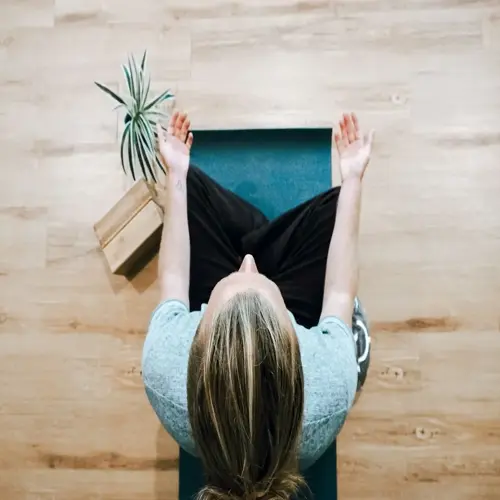Is lying down acceptable for sleep meditation?

Written by
Natalie Hamilton
Reviewed by
Prof. Graham Pierce, Ph.D.Sleeping is not only permitted but preferred for sleep meditation. In contrast to the alert posture of day meditative techniques, sleep methods prioritize comfort over alertness, which naturally induces drowsiness. The position also signals to the body that it is safe to undergo rest. You'll enter a much deeper state of relaxation by being free of physical distractions.
Supine with Knee Support
- Lie flat with pillow under knees to reduce lower back strain
- Place arms relaxed at sides palms facing upward
- Promotes spinal alignment and full body relaxation
- Prevents tension accumulation during extended practice
Side-Lying Variation
- Position pillow between knees for hip alignment
- Support head with thicker pillow to keep neck neutral
- Place top arm comfortably across body or pillow
- Excellent for pregnant individuals and back pain sufferers
Semi-Reclined Posture
- Use adjustable bed or wedge pillow at 30-45° incline
- Maintains open airways for comfortable breathing
- Prevents acid reflux during evening practice
- Ideal for those with respiratory concerns
Comfort directly influences the effectiveness of the meditation.Discomfort creates distraction, which is counterproductive to the goal of relaxation. Sleep meditation differs from mindfulness meditation in that it encourages sleepiness, rather than alertness. Choose your postures so that you rest and surrender to gravity completely. Your body will respond with much more profound physiological relaxation.
Use position adjustments tailored to personal needs. Place blanketed folds under pressure points where needed, such as heels or elbows. Change positions every ten minutes or so if you feel stiff. Remember, the goal is not unbroken stillness, but comfort, which is sustainable at the time. Movement, however slight, keeps relaxation without breaking the chain of attention.
Try different positions tonight. Note how the next day comfort influences your ability to relax mentally. Ongoing ease with supportive positions helps the body transition smoothly into sleep. Notable improvements in sleep often occur within two weeks.
Read the full article: Guided Meditation for Sleep: Techniques and Benefits

